On the Bench
As I said, HDTVs these days tend to be pretty
good out of the box. The uncalibrated color temperature graph is shown
below, with the calibrated color temperature graph following. The TV tended
to be a bit warm (reddish) in the dark regions before and after calibration.
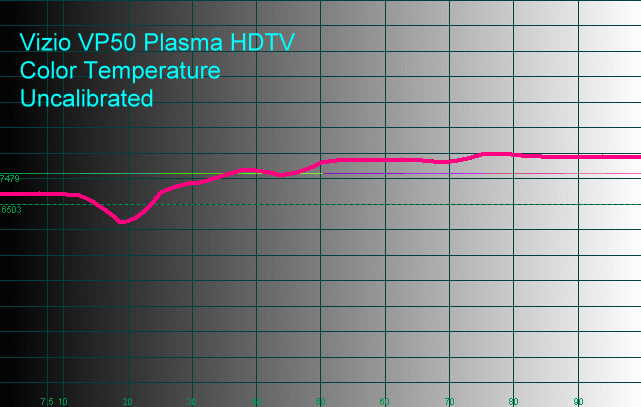
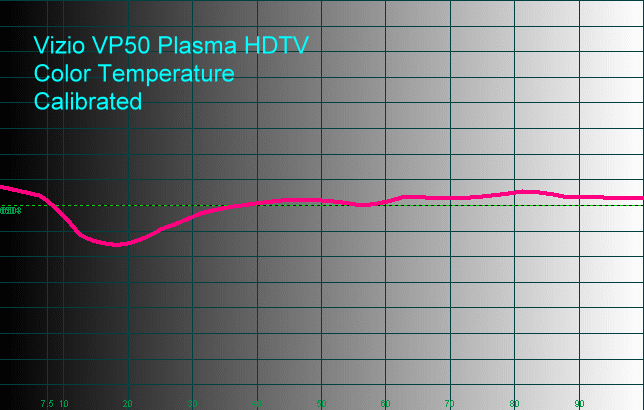
Brightness measured at 31.3
foot-Lamberts, which is about twice as bright as a commercial movie theater.
So, there is plenty of brightness for viewing anytime. I measured a contrast
ratio of only 300:1, which is way below the specification. The problem
appears to be the background illumination (the black level), which measured
0.1 foot-Lambert. However, because the screen is so bright, it still looked
great.
Here you see the RGB graphs before and after
calibration. Although I could get the RGB lines closer together for IREs
above 30, the spread increased below that brightness value. This is a good
reason why manufacturers need to add more calibration menu items in future
models, including the ability to vary RGB values at different IRE levels, such
as 10-30, 31-60, and 61-100.
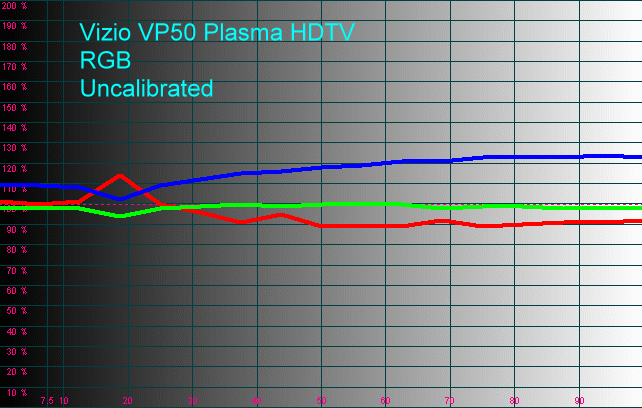
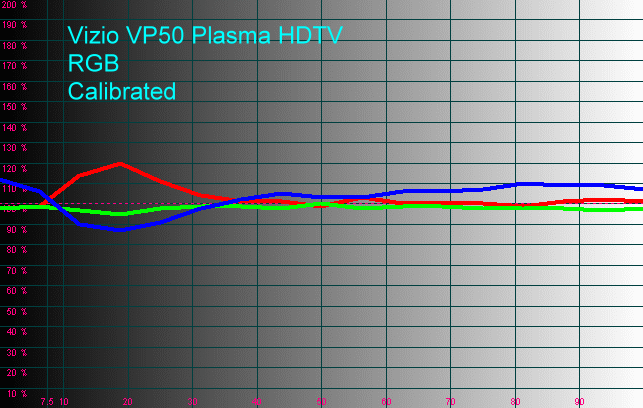
Gamma before and after calibration was about
the same. Again, perhaps some menu additions to the calibration
capabilities would be helpful, with individual adjustments for 10-30, 31-60, and 61-100 IRE.
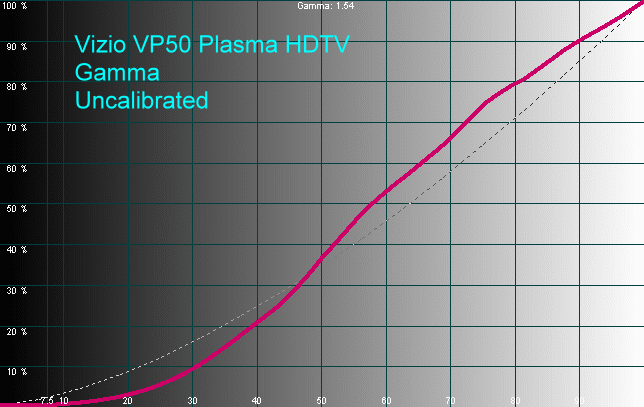

The CIE Chromaticity graph indicates that it
has enough red capability, more than enough green (although slightly blueish),
and not enough blue capability.
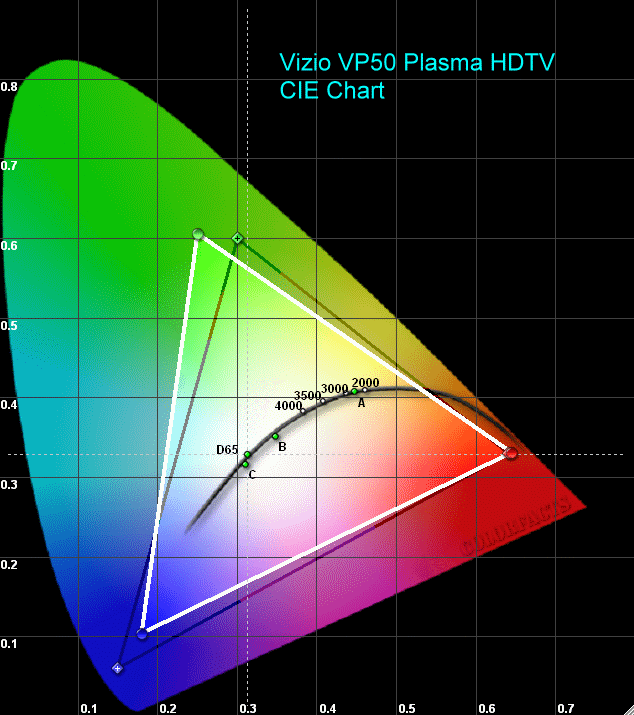
Conclusions
The VIZIO VP50 50" Plasma HDTV display,
although not as terrific as one of the much more expensive models from other
big name companies, is still a very good product, and well worth considering if your
budget is limited, or if you just don't want to spend in the $2k and up
market. It has the digital connections necessary (HDMI) for that new high
def DVD player you bought, as well as high def programming from satellite.
It's a snap to set up, looks fine without having to calibrate it, and has
great sound without having to connect it to a receiver.
- John E. Johnson, Jr. -